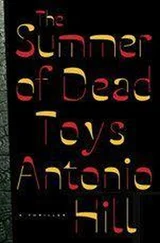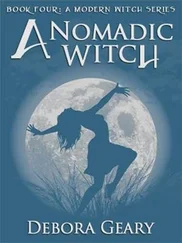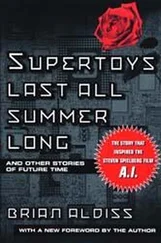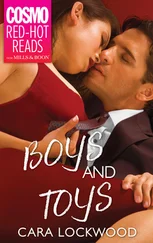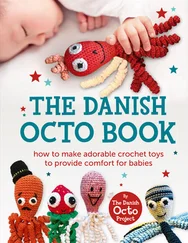SAMMY’S SNOWLAND—THIS IS A FREE RIDE
The canoe sailed into the dark mouth of the whale.
I sat in the slim black boat and felt as still and calm as a rain puddle the next clear morning. Strange: the feeling of having both everything and nothing to lose. The tunnel was dark gray, almost but not quite black. The passageway curved dramatically, as if we weren’t going directly through the mouth of the whale, but down into someplace else.
In fact, the canoe whizzed through a chained-off area that said STAY OUT, CERTIFIED PERSONNEL ONLY. However, that could be part of the ambience, like the danger, keep away signs on Mr. Toad’s Wild Ride.
It was damp, though, and the smell wasn’t too great. This was probably a mistake. If only June were here.
Actually, the worst part was the lack of music or any sound at all, save the swishing of the prow through the water. In the beginning of some of the rides—Snow White, for example—it was very dark, but people kept warning you about what was going to happen, the story being narrated in this scary way so that when they told you, “The Poison Apple!” and the witch extended her hand, practically right on top of you—well, it was very effective.
Then, just when I began a little prayer in my head, I heard:
Half of the earth’s surface
is covered with snow.
The tunnel began to lighten, as if dawn were breaking. Oh darn , I thought, both relieved and disappointed. It’s going to be educational, like the Wamsutta Panorama over in Tomorrowland . The voice, though, was cold, indifferent, and vaguely British, not the jolly and paternal voice you associated with Disneyland, movies at school, and television commercials, the ones that told you how various products were good for you.
We are like the earth.
Snow covers us over.
We are only half-alive.
The tunnel turned very bright, the source of illumination the walls themselves, which seemed to shimmer and swell.
Any minute now, something was going to happen.
The canoe began a long, careful curve (oddly, it didn’t seem to be controlled by underwater cables, like the boats on the other rides) inside the pearly walls, and then rounded a bend. And here was Storybookland! A miniature countryside was laid out before me, a whole vista: houses, roads, stores, freight train, and lush groves, just like the ones we owned: lemon, orange, avocado. And there was this house—such an interesting coincidence—which looked exactly like our house, with the stables and the pepper tree and everything, cats lounging in the backyard and Ace nickering in his stable. In fact, the entire town looked precisely like ours… but weren’t all small towns in Southern California pretty much alike? The ocean glimmered in the distance, beyond the rounded brown hills.
Disneyland was such an amazing place! How did they make a tiny ocean like that? You could see the waves and the sand and the minute seashells, the lank hanks of diminutive seaweed, like mermaid hair, washed up on the shore.
This is what most people see.
Well, fine. It was adorable.
And this is what could be seen.
This is what is also present.
The canoe rounded another bend, and then you couldn’t tell if you were coming on the same scene transformed or a new scene that was supposed to represent the original scene transformed. (Several years later, Disneyland imitated Sammy’s ride in It’s a Small World, but he alone can be credited with the effect of never knowing what you are seeing. In IASW, you realize that each vision is a new scene, a partial replication of the previous one. You end up marveling not at the sheer majesty but at the expense.) The transformation was stunning! The town with distant ocean was precisely as it had been before, except that now there was a new dimension, projecting out from each object and animal—was this the fourth dimension? It was like those lapsed-time photographs of cars in big cities, and you see, besides the car, the trail that its passage made through space. No, wait, this was better than that: where the ocean had been—still was, I mean—there was now this sea of structure, like some kind of endlessly complicated illuminated molecule model, set in motion. Or it was like the surface of things had been rendered transparent, those educational toys of plastic people: Invisible Woman. The inner organs were revealed through the vanishing exterior of her skin.
But really, when you were looking, you didn’t think any of these things. You just thought wonder .
I repeat: This is what is also present.
Three-D glasses! Linwood wouldn’t let me go to any of those movies because they were about monsters and so forth, but I bet that’s what they were like. Only, obviously, one dimension better.
The canoe rounded the bend again, and I craned my neck for one more glimpse of the lit-up, molecular village. Was that the end of the ride? After all, it was free.
Again with the slate-gray tunnel, the depressing silence. I thought about that part in the Greek myths where they row you over to Hades. Were we underground? But, as if June had been sitting next to me, I heard: No, stupid, water can’t travel uphill!
The tunnel went on a long time. I began to get hungry. Was it eleven o’clock yet? Was June out there waiting?
Then the boat stopped. And the walls went totally black.
If I’d just eaten, I would have gone ahead and thrown up. But those pancakes were long digested. Nevertheless, my stomach hurt, and I had to pee.
It was so dark and so quiet.
Was this what being dead was like?
I started to sweat, and I never ever sweat.
Then I heard, far away, a kind of splashing sound. Not like somebody walking, but like something else—a boat?—moving over the water.
“Hello!” My voice was reedy and thin.
No answer.
“Hel—” I shut my mouth. What if it was Tommy?
But how could Tommy have found me?
I was going to shout again, and not be afraid, when I saw something gliding toward me from the far end, the direction my canoe was pointed in. It was another canoe, white, with a kind of flashlight attached to its prow.
I waited. No way was this going to be Tommy.
And, as the canoe got closer and closer, I saw that there was a man inside, a man in a clam-colored suit.
He stopped his canoe inches away from mine.
I shivered. It was awfully cold in the tunnel. Then, to be polite, “Nice ride you have here.” Cartoon-mousetime with the voice again. “But my boat’s stuck.”
“There are laws,” the man announced after a moment. His was the indifferent voice of the Snowland.
My stomach felt like Stan’s shot put.
“There are laws for everything. Thieving, for instance.” He leaned closer, his ice-chip eyes glittering in the flashlight.
“Deane’s book.” The words came out before I’d even considered them, as if I had my own fourth dimension.
“Some things can be stolen, and some things can be bought.”
I saw the red leather book, felt its slick surface, even though I knew it was back in the motel room, inside my cigar box. I saw the pen-and-ink drawing of The Bad Thing, and then, presto, it was gone. My stomach didn’t hurt at all. I was so calm, I could have gone to sleep.
“Children steal things. Children don’t know what to do with them.”
“Who are you?” I asked. “My boat’s stuck, and I have to meet my sister.”
“You know my name is Sammy,” he said. “And I have something you need.”
“Me?”
“There is great danger ahead for your family. But there is always a way around every law. Each law with the penalty attached, each system connected to another system. Because you have something that I want, I’m prepared to—”
Читать дальше

